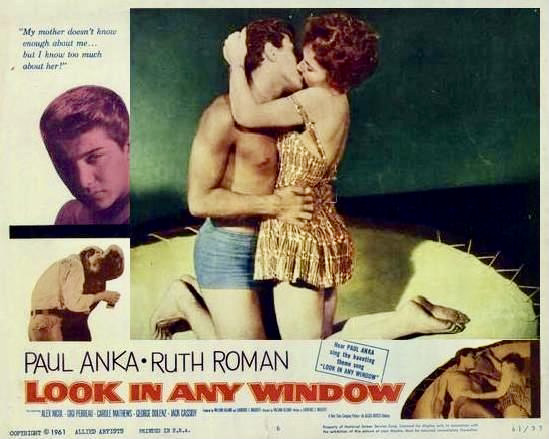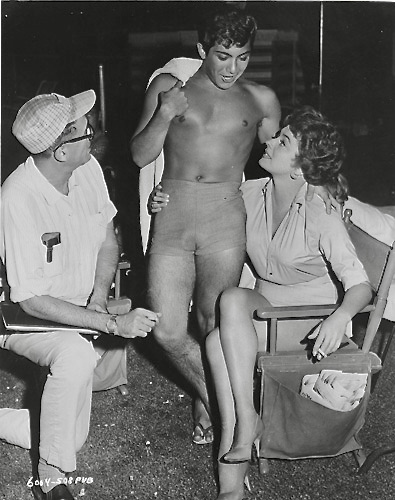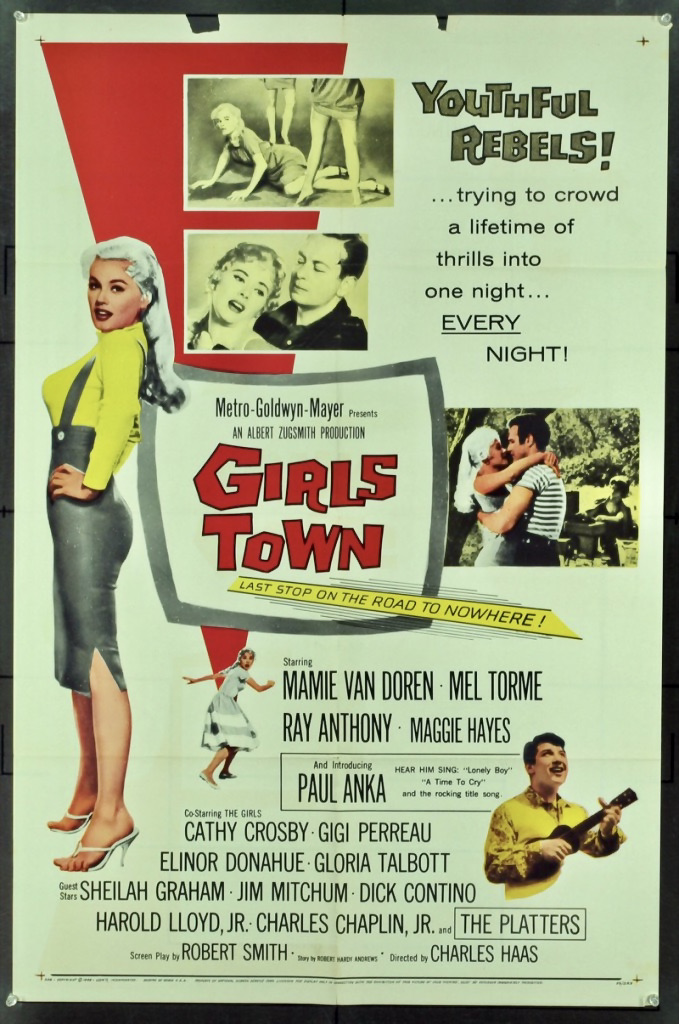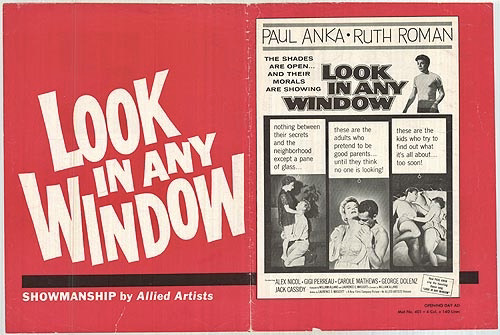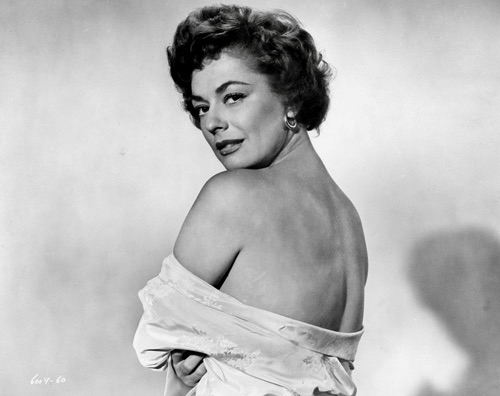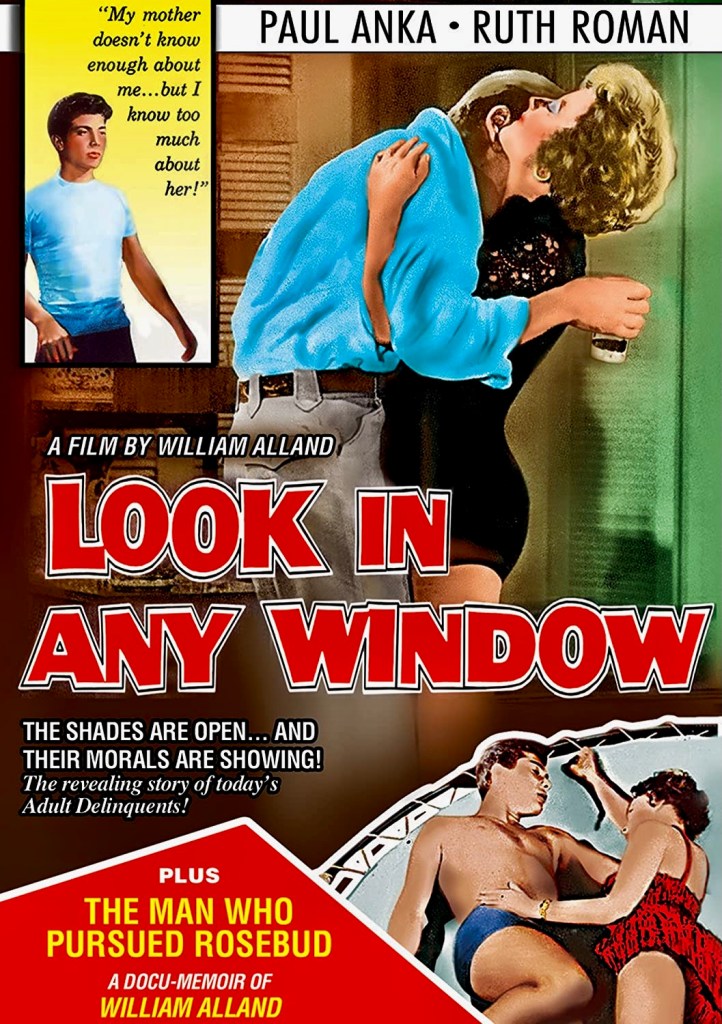
Among the many teen idols of the fifties who climbed to fame with top forty hit records, only a few made the successful crossover to film acting. Pat Boone was groomed by 20th-Century-Fox as a teen matinee idol in Bernadine (1957), Tommy Sands stayed in his comfort zone playing an aspiring pop star in Sing Boy Sing (1958), Fabian made his screen debut with the family-friendly backwoods drama Hound-Dog Man (1959), and Bobby Rydell played your average boy-next-door opposite Ann-Margret in Bye Bye Birdie (1963). Paul Anka, on the other hand, appeared in the most unlikely vehicle for his first major starring role – Look in Any Window (1961).
Anka plays an obsessive voyeur, given to sneaking around at night in a creepy mask, spying on his neighbors and letting them know they are being watched. Not the sort of role his fan base was probably expecting. One even wonders if Anka really lobbied to play this part or if it was the influence of his manager, financial considerations or something else. As it is, the role would present challenges to even the most experienced actor and there is no safety net of musical numbers or an innocuous romantic plot to fall back on.
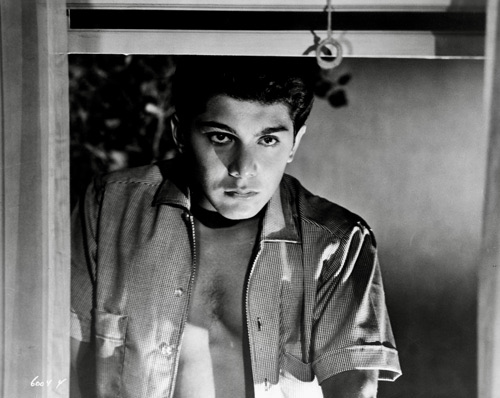
Anka with his short height, stocky build, non-WASP looks and slightly high pitched, nasal voice doesn’t pose any acting threat to James Dean but his disturbed character is, in some ways, similar to Dean’s Jim Stark in Rebel Without a Cause (1955) and Look in Any Window traffics in the same sort of alienation and generation gap issues addressed in Nicholas Ray’s film. Anka may have even been attracted to this part because of the opportunity to play an outsider or teenage misfit in the James Dean mode.
But don’t expect a mainstream Hollywood feature. Look in Any Window is titillating drive-in fare for its era. Not as soft-core and steamy as Sin in the Suburbs (1964) or as glossy and star-driven as Peyton Place (1957), the film is still an exploitation film that presents itself as a serious expose of suburban America, taking to task irresponsible parents and their loose morals. As if to protect themselves against charges of cheap pandering, the promoters for the movie took a moralistic tone in all of the ads as if this were an after-school special for parents.
“The shades are open…and their morals are showing.”
“Nothing between their secrets and the neighborhood except a pane of glass.”
“The screen shocks with the truth about what goes on in the most “respectable” neighborhoods in town!”
“The morals, the mistakes of the kind of people you know…EXPOSED at last!”
“Adults who want new sensations out of life…before it’s too late! Kids who want to find out what it’s all about…too early!”
“These are the parents who pretend to be good parents…until they think no one is looking!”
“Look at these adult delinquents…They’re the reason kids like us do the things we do.”

It’s pure soap opera but with a kinky edge and good, trashy fun with some surprisingly strong performances amid the overbaked melodramatics and numerous subplots. The dialogue is also surprisingly frank at times with the sort of ugly marital arguments and putdowns that make one squirm. Unfortunately, Anka’s window peeping, which is promised in the title, is minimal and takes a back seat to the co-dependent and damaged relationships unraveling on the screen. Still, the opening (with Anka singing the theme song) is genuinely disturbing with our teen anti-hero putting on that creepy mask, climbing on rooftops and spooking his teenage neighbor Eileen (Gigi Perreau), who is having an identity crisis of her own.
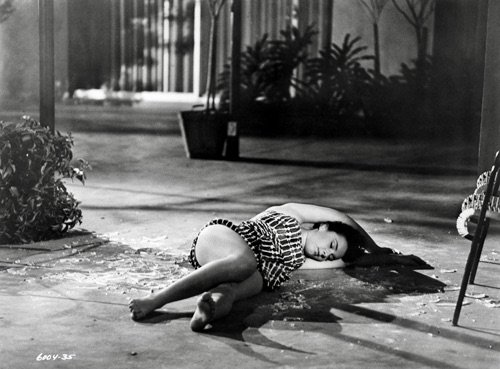
Anka has an awkward, self-conscious screen presence….or is that the furtive, angst-ridden character he is playing? It’s hard to tell the dancer from the dance here so maybe it’s brilliant acting. Still, his tormented teenager is more repulsive than sympathetic and he certainly earns extra points just for taking on such an unlikely role.
Among his musical peers, Anka was clearly a prodigy (his recording career started at 14) and one of the few to write most of his own songs (“Diana,” “Put Your Head on My Shoulder,” “Lonely Boy”). The fact that he also wrote so many hit songs for others such as Buddy Holly (“It Doesn’t Matter Any More”), Frank Sinatra (Anka wrote the English lyrics to “My Way,” a French song by Claude Francois, Jacques Revaux and Gilles Thibault) and Tom Jones (“She’s a Lady”) only enhances the legend. Justin Bieber, a fellow Canadian and early-starter like Anka, could learn a thing or two from this guy.

Despite Anka’s massive fame and successes as a teen idol, his forays into film acting were minor efforts and not tailored to his unique talents or chosen with an eye on his fan base. His first official screen credit was for singing the theme song to Samuel Fuller’s Verboten! (1959), a troubling look at budding Neo-Nazis and young German nihilists in the wake of post-WWII Berlin. Girls Town (1959), a low-budget juvenile delinquent drama with Mamie Van Doren as a trouble-making vixen named Silver Morgan, marked Anka’s first on-screen film role and he got to perform four songs including “It’s Time to Cry” and his hit, “Lonely Boy.” But despite his special “Introducing Paul Anka” credit, it’s really little more than an extended cameo in a B-movie vehicle for Ms. Van Doren (and her husband at the time, bandleader/musician Ray Anthony, in a leading role).
In Anka’s second feature, The Private Lives of Adam and Eve (1960), a tawdry sex comedy with fantasy dream sequences, the teen idol was completely overshadowed by his more experienced co-stars Mickey Rooney, Mel Torme, Tuesday Weld and Mamie Van Doren (again). Other than singing the theme song, he was not showcased in any breakout musical numbers. Look in Any Window, on the other hand, was Anka’s first – and last – starring role in a dramatic film and probably the oddest entry in his sporadic movie career. Not surprisingly, Anka’s best film role is playing himself in the superb but rarely seen documentary Lonely Boy (1962), a candid portrait of the singer at the height of his teen popularity directed by Wolf Koenig and Roman Kroitor for the National Film Board of Canada.
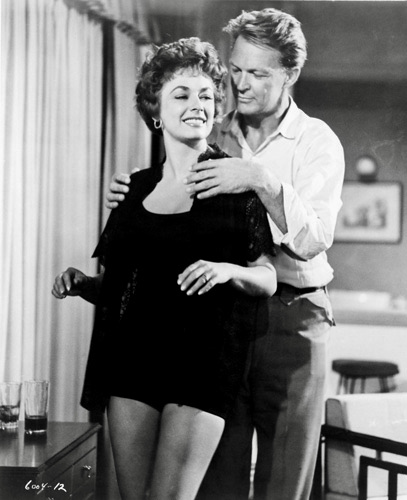
Although the first impression of Craig Fowler (Anka) in Look in Any Window is one of a potentially dangerous sicko, he turns out to be just a misunderstood teenager in need of a stable family life. His problems stem from his parents’ barely functional marriage and most of the hypocritical behavior, martial infidelity and all-round bad behavior depicted in the film is clearly the fault of the older generation. Things start to fall apart from the getgo as Craig’s father Jay (Alex Nicol), an airplane mechanic, is laid off and comes home to deal with his latest defeat by going on a drinking binge. After he passes out on the couch, his wife Jackie (Ruth Roman) looks at him and says, “You’ve been gone a whole month. Riding all alone in the tail section. It’s not the transportation they promised you. You should have told them to go to hell. You wanted to be treated like a man. Act like one.” It’s obvious who wears the pants in this family and as Jay retreats into an alcoholic haze, Jackie entertains the prospect of other male company while she is still attractive and desirable. She finds a more than willing taker in neighbor Gareth Lowell (Jack Cassidy), a high living, skirt chasing car salesman whose own marriage is cracking up.
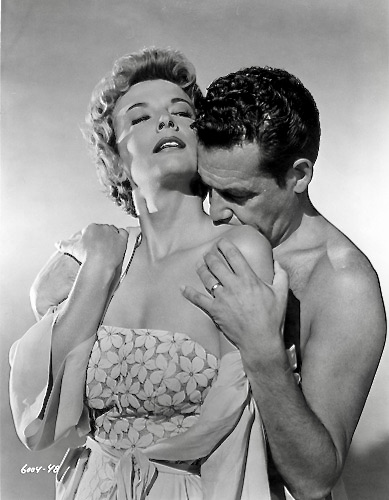
The Lowell family is no better off than the Fowlers with Betty (Carole Mathews) feeling trapped in a loveless marriage but willing to give it one more shot for the sake of her teenage daughter Eileen, who is just as confused and disillusioned as Craig. Typical of the exchanges between the two emotionally estranged parents is this argument on the subject of moving to a new city or community:
Gareth: I like it here.
Betty: Why not? Around here where the only real religion is keeping up with the Jones, you’re a Jones.
Gareth: And you’re Mrs. Jones.
Betty: They’re always building new bookcases. I think it’s more important to read a book.
Gareth: Who, you? Miss diving champion of 1942, the body beautiful? Since when did you get smarter than anyone else around here?
Betty: By accident….There’s more in life than home improvement, there’s self-improvement.
When Gareth later storms out of the house on his way to a party weekend in Las Vegas, he entices Jackie, watering her front lawn, to join him. In a moment of wild abandon, she drops the spraying hose on the ground, hops in and the adulterers drive off into the night. Completely demoralized, Betty accepts an invitation from her new neighbor Carlo (George Dolenz), a rocket scientist (yeah, right!) and recent widower, to join him for late night coffee and cake. Though empathetic and attentive, Carlo is no paragon of virtue either and makes a pass at Betty that is almost successful. Meanwhile, the two teenagers, both of them damaged but genuine kindred spirits, stumble through an awkward romantic encounter that almost ends in rape.
As if there wasn’t enough bitterness and animosity wafting through this suburb, Look in Any Window adds a pair of investigating detectives into the mix who don’t see eye to eye on much of anything. Sgt. Webber (Dan Grayam) is the older, working class cop with a more Neanderthal approach to law enforcement. “Let me get my hands on any guy who isn’t normal,” he says in regards to the masked lurker, “He’ll confess.” His attitude toward the suburbanites he is sworn to protect isn’t much better as he reveals his contempt for Jackie Fowler in particular, saying “Stupid, sexy broad. How I’d like to put a few questions to her.” Webber’s partner, officer Lindstrom (Robert Sampson) is younger, more liberal and compassionate in his views and college educated, a point that rankles the senior cop. When Lindstrom offers his psychological profile of the Peeping Tom to some neighbors, Webber can’t resist saying sarcastically to onlookers, “Professor Freud of the police. He wants you to know he went to college.”
All of the subplots dovetail in a final set piece – a fourth of July pool party at the Lowell home as everyone has too much to drink and the fireworks begin, both literally and figuratively. Craig goes back into lurking mask man mode while Jackie and Gareth openly paw each other in public, triggering the cuckolded Jay’s enraged drunken reaction. It all ends in a big backyard brawl with the two cops trying to restore order while giving chase to the masked marauder.

Look in Any Window might have been less memorable without some strong actors in key roles. Chief among them is Ruth Roman, who brings an overripe sensuality and sexual swagger to her love starved housewife. Too much woman for almost any man, Roman has such a strong screen presence that only an actor like Kirk Douglas in Champion (1949) or Sterling Hayden in 5 Steps to Danger (1957) can hold their own against her smoldering, man-eating persona. She has good chemistry with Jack Cassidy’s devil may care Lothario in their scenes together and there is clearly some incestuous innuendo between her and her son, most obviously in the sequence where she rubs lotion on Craig’s scratches (from an attack on Eileen).
Alex Nicol (best known as the psychotic son of rancher Donald Crisp in The Man from Laramie) is effectively low key as the self-pitying ne’er-do-well husband of Roman and Carole Mathews as the long-suffering Betty might be the most likable and sympathetic figure in this messed-up community.

As for the top billed star of the film, Paul Anka wasn’t compelling or dynamic enough to attract bigger and better film offers in more mainstream Hollywood movies. Except for a well-received minor role in the all-star blockbuster WWII epic, The Longest Day (1962), Anka would not make any more feature films until the nineties when he turned up in small roles in Captain Ron (1992), Ordinary Magic (1993) and Mad Dog Time (1996).
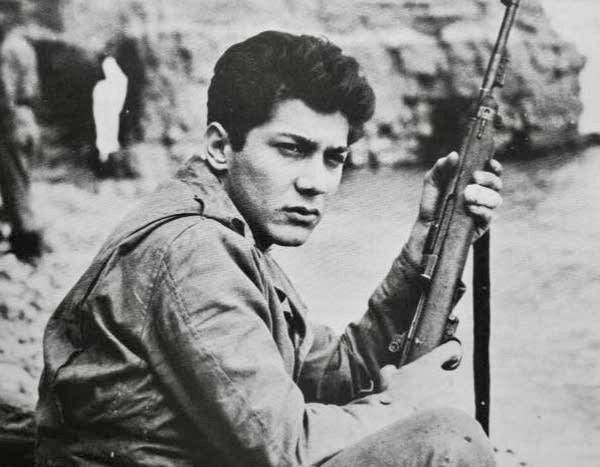
Released by Allied Artists, which was formerly known as the poverty row studio Monogram Pictures, Look in Any Window was directed by William Alland, who produced a number of successful sci-fi and horror films at Universal-International with director Jack Arnold. Among them were Creature from the Black Lagoon (1954), It Came from Outer Space (1953), Tarantula (1955), and The Space Children (1958). On his own as a producer, Alland would tackle more adult themed movies that bordered on exploitation in his later years that included The Party Crashers and As Young As We Are (both 1958).
Interestingly enough, Alland got his start as an actor with Orson Welles’ Mercury Theater group, first on the New York stage and then in radio. Look in Any Window stands as Alland’s only directorial effort. The cinematographer on the movie was W. Wallace Kelley, who worked almost exclusively for director/star Jerry Lewis from 1961 to 1970 with only a handful of exceptions.
Look in Any Window would make a wonderfully lurid outdoor pool party movie for those seeking something a little more offbeat than Beach Party, Gidget or Jaws for a summer event. Unfortunately, the film has been difficult to see although it has popped up on Turner Classic Movies in the past and also appeared on DVD in the past with Smash Vision releasing a version in 2012 though I have not seen it nor can I confirm whether this is a legitimate distributor or a bootleg copy.
Other links of interest:
https://musicianguide.com/biographies/1608001205/Paul-Anka.html
https://www.theguardian.com/news/1999/sep/16/guardianobituaries2
https://jackpendarvis.blogspot.com/2012/07/pipe-smoking-scientist-next-door.html


